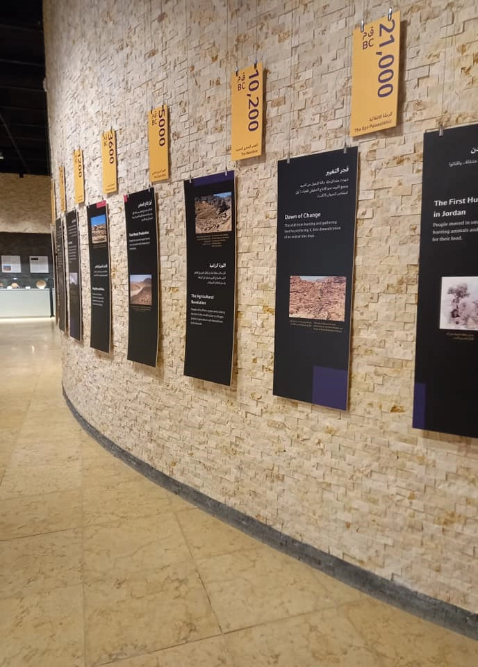Gallery 6: Nabataean Expressions
This exhibit consider Nabataean society through the following three fields:
- The Nabataean Kingdom and the Nabataean Royal : Genealogy of the Nabataean kings, coins with royal portraits, artifacts from royal residences, etc.
- Nabataean language, Nabataean writing and inscriptions
- Nabataean trade, mainly of frankincense and myrrh, trade-related artifacts, and trade maps
- Nabataean Coins
- The Nabataean Language and Writings
- Nabataean Trade
- Nabataean Trade Organization
The Nabataean Script

The Nabataean script was written from right to left (like all Semitic scripts). It was alphabetical and consisted of 22 letters. Some characters appeared in a variety of forms, due to the stylising effects of inscription in stone, their positions within words, and stylistic changes over time.
From 100 BC to AD 100, when Raqmu-Petra was at the zenith of its power, Nabataean writing was widely used. Around 6000 Nabataean inscriptions have been recorded across the former Nabataean Kingdom (in Jordan, Saudi Arabia, Sinai, Hawran and the Negeb). A few other inscriptions have been found in Mediterranean islands and Italy. Almost all of these were carved in stone.

Only a few known Nabataean inscriptions are of significant length; roughly 90% of them are only comprised of signatures or simple greetings to passers-by. The Nabataeans left us no literary, philosophical, or scholarly texts, nor did they leave us written sources of law, religious liturgies, or historic records. It has been speculated that the Nabataean merchants would have needed written records of their transactions, which have yet to be found and would represent an important part of understanding Petra’s past.
 For Audio Guidance, please Click here
For Audio Guidance, please Click here





